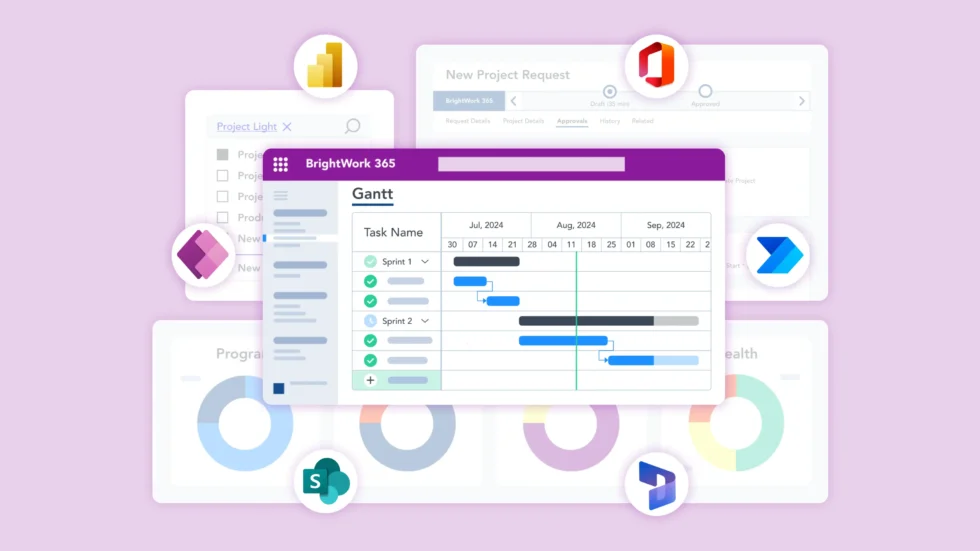Why Conflict Arises in Project Teams and How to Manage It
Conflict is an inevitable part of our personal and professional lives. Individual opinions, ideas, beliefs, and personalities clash for many reasons!
The Cost of Conflict in the Workplace
Workplace conflict can be a significant drain on productivity, often consuming valuable time and resources. Employees frequently spend hours addressing conflicts within teams, leading to lost working hours and reduced efficiency.
Team conflict, if not managed correctly, can create ongoing disruptions that hinder project progress and overall performance.
Addressing and resolving conflicts promptly is essential for improving team collaboration, boosting productivity, and achieving better project outcomes.
Dealing with Conflict in the Workplace
Managing conflict is one of the biggest challenges a project manager faces. Ignoring conflict in project teams is not an option; it must be tackled head-on using the right conflict resolution strategies and tools to address issues and ensure project success.
Keep reading to learn more about seven common causes of conflict in a team and conflict resolution techniques.
Standardize your Project Management Processes with Best Practice Templates
Get out of the box templates for Microsoft 365

What is Conflict?
Conflict results from incompatible goals or competition for scarce resources. Differences in communication styles, values, and expectations are common sources of conflict in project management.
There are various types of conflict, including:
- Interpersonal conflict refers to a conflict between two individuals. This frequently results from situations that arise from personality differences in your team
- Intragroup conflict is a type of conflict that happens among individuals within a team, often caused by task conflict or role ambiguity.
- Intergroup conflict takes place when a misunderstanding arises among different teams within an organization.
Conflict may also be manifest (escalates quite quickly) or latent, caused by the inability to communicate about the source of the conflict and its impact.
7 Causes of Conflict in Project Management Teams
Conflict can arise at any time during a project, leading to decreased productivity, loss of creativity, and an unwillingness to collaborate. Here are some common typical sources of conflict within a team:
1. Project Setup Issues Leading to Team Conflict
Collaborative projects bring together individuals with various levels of experience from different sectors. Each team member will have their own approach to project setup, methodologies, documentation, reporting, and so on.
Such differences in project goals and management methodologies can create friction and conflict in a team.
2. Communication Breakdowns
Poor communication is at the root of many failed projects, so it is little surprise that communication leads to team conflict.
Without a communication plan, team members quickly become confused about their work, priority tasks, and the overall purpose of the project.
Clear communication, active listening, and establishing productive team habits are also essential in preventing misunderstandings.
Differences in individual communication style also cause tension; some team members may like to record every detail using email whilst others may prefer a quick catch-up as needed.
3. Unclear Roles and Responsibilities
Handling and resolving project conflicts becomes difficult when team members do not know what they should be doing and how their work impacts others. The blame-game often starts if a key project task is overlooked or delayed because no-one knew who owned the requirement.
4. Stakeholder Engagement Problems and Project Conflicts
Too much or too little engagement, frequent change requests, lack of internal buy-in – stakeholders can support or disrupt your project in many ways! Proper engagement is critical to resolving team conflicts.
5. Resource Conflict in Project Management
Projects are notoriously difficult to resource, leading to competition within the project team and between departments. This problem is even more troublesome in organizations that plan projects by department or without a centralized view of all projects across all teams.
6. Underperforming Team Members
Tensions will arise if some team members are not pulling their weight, leading to frustration, decreased morale, and potential delays in project timelines.
7. External Vendor Issues
Problems with communication, deadlines, contracts, and quality can lead to disagreements with external vendors and dealing with conflict in a team. Unresolved, these issues can lead to missed deadlines and unhappy customers.
Additional Sources of Conflict in Project Teams
Additional sources of conflict can include:
- Team history
- Scope creep
- Schedule changes
- Declined change requests
- Someone simply having a bad day
Why Ignoring Conflict in Teams Leads to Bigger Problems
By now, we have established that conflict is unavoidable and has multiple sources. With so many other project issues and challenges to address, it is little wonder that many people prefer to ignore conflict, hoping things will just work themselves out.
In fact, the opposite often happens, with underlying tensions growing until the team reaches a breaking point. In some cases, people may even leave the organization if a situation is not resolved.
These unresolved conflicts also require difficult conversations. Knowing how to approach different types of difficult conversations is an important skill to cultivate, as it can help manage small issues before they escalate or ‘blow out’.
In the following sections, I will outline the PMBOK approach to conflict management and additional suggestions to get you started.
5 PMBOK Conflict Management Techniques
PMBOK advocates the following five methods when dealing with team conflict. The selected approach will depend on the circumstances and your own conflict management skills.
1. Withdraw/Avoid Conflict Management
Temporarily avoiding the situation will give you space to think about the problem from other perspectives and avoid conflict escalation and any emotional outbursts. Just don’t withdraw for too long, as unresolved issues could affect team dynamics.
2. Smooth/Accommodate Conflict Management
Approach the problem by focusing on areas of agreement rather than differences. This method helps resolve conflicts by addressing the underlying causes while maintaining harmony among team members.
3. Compromise/Reconcile Conflict Management
Some conflicts cannot be resolved and require a compromise. In this case, both parties must make concessions. This method is often used when teams need a quick resolution to continue working toward project delivery.
4. Force/Direct Conflict Management
On occasion, you may need to use your position as a manager or leader to enforce a solution. This approach can negatively impact team effectiveness, so use it cautiously.
5. Collaborate/Problem Solve Conflict Management
Focusing on multiple viewpoints and insights, this technique requires a cooperative attitude and open dialogue. This approach strengthens the team as they work together to solve the problem. However, be prepared to invest time and energy to make this approach work.
In her Ted Talk on finding common ground during disagreements, Julia Dahr offers three techniques, including simply listening to other people and embracing uncertainty about our own ideas.
Additional Conflict Management Ideas
Use these suggestions to supplement the PBMOK techniques as needed.
Prevent Conflict
A good project leader should seek out and address conflict before a difficult situation arises. In the project environment, feedback mechanisms such as one-to-one meetings can help resolve a conflict by identifying any tensions or conflict situations early on.
Define Acceptable Behavior
Make sure that everyone understands the company culture and acceptable behaviors within a project team. Define decision-making processes, roles and responsibilities to encourage team alignment. Document these principles for project managers to use for training new project team members.
Document methodically
Memories are fuzzy and unreliable! If you have to handle conflict in project management, be sure to document everything, including meetings and one-to-one conversations. You need access to an accurate, fact-based account should the situation escalate to senior management or HR.
Practice empathy
Taking time to understand the situation from the perspective of other people is important for two reasons. Firstly, you will quickly understand how a situation is impacting team members individually and some steps towards resolution. Secondly, if an individual feels heard and understood, this can quickly diffuse the situation.
Use Conflict Constructively
When managed correctly, conflict as an opportunity can lead to new learnings, innovative solutions, and increased team collaboration.
Depending on the severity of the conflict, take a step back to analyze the team’s various opinions and the underlying source of conflict and help the team reach a solution that benefits the project.
Using the Collaborate/Problem Solve Conflict Management, encourage the team to brainstorm and work together to find a new solution.
Turning Conflict into Opportunity
No matter how strong your team is, conflict is inevitable during project execution. From poor project setup to communication issues and scarce resources, there are many ways to spark conflict and overcome this problem.
